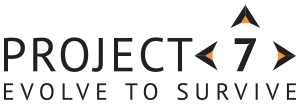Transport for London is a local government body responsible for the transport systems in Greater London. They provide pan-organisational engineering support for all modes of transport on the network, both over and underground.
The engineering directorate employs around 1,500 staff across 43 engineering functional capabilities who support the delivery of activities as varied as Skylines to Track, Ferries to Signalling and Underground Vehicles to Cycle Superhighways.
Key stakeholders in the programme included the Director of Engineering, Chief Operating Officer in Engineering, and the Chief Technical Officer in Engineering, as well as the Engineering Leadership Team.
The project objective was to create and embed a robust governance process across Business Delivery Areas, Functional Capability Pools, Technical Innovation and Executive Integration, and to establish an Engineering Management Office [EMO] to support the organisation in the development of the Engineering Operating System [EOS].
Following a recent organisational transformation, TfL had struggled to create a governance process that could consistently measure and highlight both positive and negative performance levels within the main business areas [Engineering Delivery, Functional Capability and Capacity, Technical Innovation and Executive Integration], and facilitate a strategic or ‘tomorrow’ view from these business areas.
This hindered their understanding and identification of, and accountability for, the problem solving activities required to provide effective Engineering outcomes for the wider Pan-TfL Business. There was also a need to provide robust and consistent engineering solutions for the London Transport system. An Engineering Management Office [EMO] needed to be established in order to co-ordinate and confirm the deployment and development of the TfL Engineering Operating System [EOS].
To meet the challenge, Project7 adapted, embedded and sustained the governance rhythm and heartbeat of the Engineering Directorate through the creation of a robust structure. This structure enabled the delivery of customer and stakeholder requirements, and developed the capability and understanding of the engineering staff at all levels to enable them to produce consistent engineering professional services.
Project7 also developed, mapped, designed, drafted & defined the implementation for the new Resource Management System [RMS]: TfLE’s ‘Keystone’ process. This involved completing a draft set of step definitions, KPI metrics, process confirmation and support systems documentation.
The Governance methodology furnished the Directorate with:
- Consistent and robust performance reviews of the ‘Matrix’ management organisation with actionable outcomes.
- A robust data architecture that enabled the Directorate to trend performance and become more able to respond quickly and appropriately.
- Over 90% of the functional capability pools demonstrated consistent and repeatable understanding and control of their organisational structure, current and future demand, and capability requirements.
- All four areas established consistent understanding and control of their delivery performance, budget vs actual head count and costs, future demand, and customer change impact.
- Better understanding and control of the Technical Innovation team’s discipline, including current challenges and risks, and activities to support future
- Executive integration showed good understanding of current and future challenges within the directorate and co-ordinated the timely decision-making processes required to alleviate these challenges.
- Highlighted middle management talent, which will underpin the Directorate’s future growth.
- An improved change control process was introduced, delivering more accurate forecasting and resource delivery.

